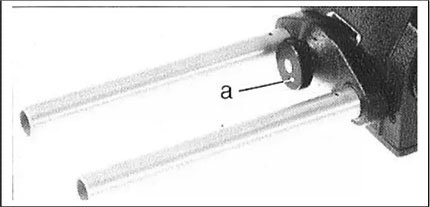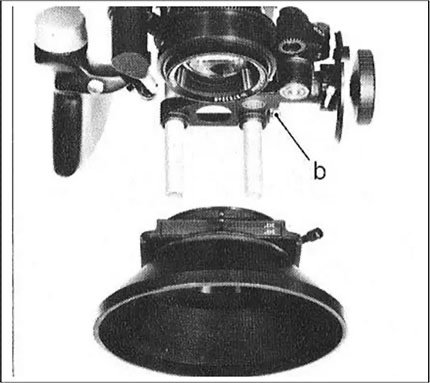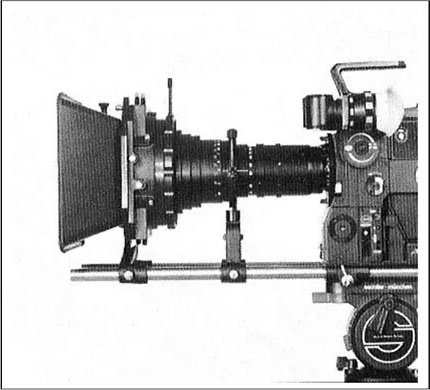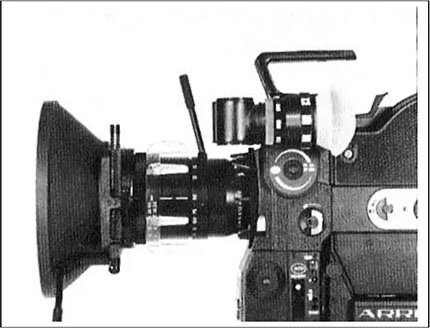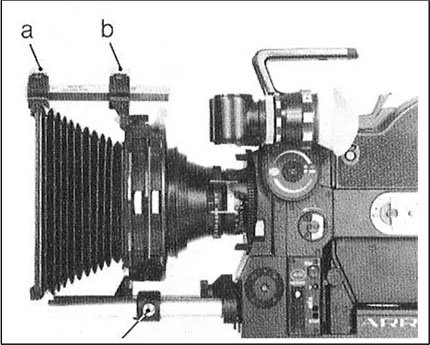-
Posts
66 -
Joined
-
Last visited
Everything posted by Matthew J. Walker
-
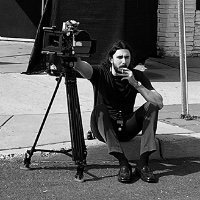
What's the sharpest Vision 3 filmstock?
Matthew J. Walker replied to Jack Jin's topic in Film Stocks & Processing
In my opinion, both 50D and 200T are equal or at least insignificant in difference when both exposed to their potential because there is no doubt that Kodak considered this before mass manufacturing a costly stock. Additionally, and like you, I also read a reply years ago somewhere on this forum--that I will cite for you if I can find it--suggesting that Kodak designed both 50D and 200T with the intention of the two looking indifferent for continuity purposes. Nevertheless, as Robin writes, 50D should have naturally tighter grain than 200T given their applications, however, this difference is easily resolved through slight overexposure of the faster speed stock. Anyway, if you have the means to, come up with a test and report back to the forum because I am incredibly curious now! -
The Panasonic AG-HVX200 series, according to research, was released between 2005 and 2006, with each suffix used as an identifier, mainly used for distribution purposes. The first of the line, the AG-HVX200, also known as simply the HVX200, is the original PAL variant of the camcorder. Another more elusive PAL version designed for distribution in Europe is the AG-HVX200E, as suggested by user Vinnie Urgo on the Creative Cow forum in 2011 where they wrote that ”you have 25 and 50fps options.” Additionally, there were two NTSC versions of the HVX200, namely the AG-HVX200P for North America and the AG-HVX200K for Japan. Interestingly, ZDNet's 2006 article Panasonic's AG-HVX200K video camera enables a new age of video production conflicts with this, suggesting that 25fps is its lowest setting. Nonetheless, the AG-HVX200K is seldom to come by. While the suffix E, P, and K refer to distribution regions, the designations A and/or AP refer to something entirely different. According to a blog from the site Twisted Lincoln, LLC written in 2005 titled HVX200 vs HVX200a -- a side-by-side low-light comparison, the author tests the HVX200A against the HVX200. The blog author tested both cameras at factory settings shot at 24fps and 720p with “various light levels” to which they conclude "The difference was dramatic. The HVX200a performs much better at lower light levels than the HVX200. There is much less noise, and the picture is much brighter.” The author even posted two low light comparison photos for reference. Nevertheless, the ‘A’ suffix on the HVX200 refers to the upgraded CCD sensor. While there was never a PAL version of the HVX200A, it is speculated that the HVX205 is the latter. With insight that the AG-HVX200P is designed for the NTSC region and understanding that the AG-HVX200A is the same NTSC camera with an upgraded CCD sensor compounded with the fact that there is no manual (That I can find) for the AG-HVX200A but only the AG-HVX200AP, it is safe to suspect that the AG-HVX200A and AG-HVX200AP are the same camera; the acronyms are lost in translation from person-to-person and site-to-site. Hopefully this information is sufficient and I hope you soon fulfill your desire to own a Panasonic AG-HVX200. I may too. References: http://www.twistedlincoln.com/reviews/hvx200-vs-hvx200a https://www.zdnet.com/article/panasonics-ag-hvx200k-video-camera-enables-a-new-age-of-video-production https://creativecow.net/forums/thread/hvx200e-vs-hvx200p
-
Flicker in any form is incredibly annoying, especially for (presumably) a 16mm first-timer because it can be the result of so many different factors. I have experienced only a slight flicker a few times with 16mm film. The first time was due to cheap LED Christmas tree string lights and the second happened inside a restaurant, also a result of LED lights. My most recent flicker incident this summer lasted less than a minute of a roll outside under only sunlight while running at 150fps which, in my imagination, I attribute the to a low battery as I never found a reason otherwise and never experienced it since (Knock on wood). Nevertheless, for your situation, you must eliminate all other possibilities first such as frequency of the flicker, a faulty scan, or low camera battery among other things. The flicker should not the result of the sun because the sun is not running on electricity.
-
The Panasonic HVX200 DVCPRO HD is incredibly affordable in 2024 so, in my opinion, there is no reason for any digital filmmaker who loves the pictures this camera can produce not to own one aside from insufficient funds. I am easily possessed by any high quality CCD sensor as opposed to the current standard of CMOS sensors and now; one of the reasons I own an Olympus E-1 DSLR.
-
In comments section of the uploader's prior video Panasonic HVX200 DVCPRO HD - Beach Footage, a user did question the striking appearance of the digital footage to which the responded with a lengthy and detailed breakdown of the unusually simple editing process which involves simple editing and the use of basic filters. At first glance, it is easy to assume this color grade must be achieved with an elaborate LUT of some sort, but the facts are contrary. The uploader writes that no color modifications are made using the camera's software and that the effect is created with default camera settings thus a large degree of the color rendering is a result of the wrong white balance. Regarding exposure, the creator uses the Panasonic AG-HVX200 DVCPRO HD integrated ND filters, specifically "9 and 11", (A reference found in the HVX200 user manual) and a variety of iris settings to control the image which is something the uploader believes creates "washed out colors" which tones down the effects of an improper white balance. Interestingly, the uploader only uses simple image adjustments (Vibrance, brightness, contrast, levels, hue and saturation) and swears by Adobe After Effects because it "behaves very similarly to photoshop." However, the most jarring of admissions is the uploader's use of solid color layers with low opacity that the video uploader believes to "punctuate certain colors, like shadows and highlights." To myself, the latter reminds me of the old Telecine color grading process which consists of limited exposure to pure red, green, or blue light filters. Nonetheless, it turns out the images are neither some awesome LUT nor color grading skills, but rather the CCD sensor itself. It's funny because less really is always more.
-
I love my Arriflex SR2 as it was my first and only 16mm camera; it has always been reliable. I'm forever committed to the Arri brand.
-
@Dom Jaeger You were correct. A tooth on the belt skipped which was causing the timing issue with the shutter. Very simple fix as you suggested. And @Mark Dunn the technician also confirmed to me that it still would have been safe to run the camera with the skipped tooth. It’s all fixed now. Thanks guys.
-
Thanks! Would running the camera in it’s current sate cause further issues or would you suggest not running it until I bring the camera to a technician? Manually rotating the mirror shutter after each take would not be the worst thing in the world, however the last thing I’d want would be to cause any further mishaps or potential damage to any camera mechanisms.
-
After shooting with my SRII at 150 frames per second accompanied by some new unusual noise, I switched off the camera and noticed the mirror shutter had not stopped in the open position when the camera is powered off, but instead stopped closed. I'm unsure, but I may have forgotten to engage the roller on the take-up side of the coaxial magazine, which in the past has simply led to a jam, however the film that was shot seemed to have spooled normally upon removing the film from the magazine. I usually don't make mistakes like that but again, I'm unsure. Now as stated in the user manual, "each time the camera is switched off the quartz controlled motor stops the mirror shutter in such a position that the finder is open for viewing". This was always the case with my camera and suddenly this has changed. When looking through the film gate, light can be seen coming through the lens, however when looking through the viewfinder the mirror shutter appears closed. If I rotate the mirror shutter by hand, an image becomes visible through the viewfinder again but the film gate is covered by the mirror shutter. What exactly has happened?
-

Adapting Zeiss 10-100mm t2 on Canon EF
Matthew J. Walker replied to Nikolaj Lütken's topic in Lenses & Lens Accessories
The easiest way to find out if a lens can be adapted without potential removal of lens material is to simply find the flange focal distance of your lens. If the flange focal distance of the lens you want to convert is longer than the required flange focal distance of the lens mount that is on your camera body, you can adapt the lens. If the opposite happens you cannot adapt the lens unless either: A.) The desired lens mount adapter diameter is wider than the lens housing diameter at it's widest point. B.) Lens housing material is removed to compensate for the wrong flange focal distance. C.) The lens is completely rehoused. Then the issue becomes if you manage to adapt the lens, you then have to measure the amount of rear element that is sticking out past the new flange point to ensure the rear element is not protruding too far running into the shutter mirror or sensor when mounting. -

Some questions about 16mm camera choices
Matthew J. Walker replied to Sam Risley's topic in General Discussion
You will eventually spend more on film stock and development in total than the entire cost of any 16mm camera out there so go for the best that you can possibly afford. -

Why the skin looks so yellowish?
Matthew J. Walker replied to Luciana Contartese's topic in General Discussion
The yellow hue is just a grade they applied in post production. -
Low contrast lighting.
-
Just get clear lenses. An anti reflective coating does not require any color tint, and the colors of the coating itself is so minimal it will not alter your perception of color. A perfect example is the Zeiss T* coating used on cinema lenses, binoculars, optical equipment, ophthalmology diagnostic machines, etc. for decades. It’s simply a thicker; Zeiss branded AR coating.
-

Zeiss Super Speed S16 - 9.5mm Clip on ND
Matthew J. Walker replied to Boris Kalaidjiev's topic in General Discussion
@Boris Kalaidjiev The matte box is on 15mm rods. I have a variation of the "bellows matte box" as per the SR II instruction manual. It is an Arri MB-10 that only takes 3x3 or 3x4 filters as opposed to 3x3 or 4x4. My SR II also came with the "Lighweight support" as described in the same instruction manual. If you can find and purchase the lightweight support I'm sure any modern matte box would work with it since they all slip onto 15mm rods as well, although keep in mind most take 4x4 filters which are quite expensive in comparison to 3x3 or 3x4 filters. Here is an excerpt from the instruction manual detailing the lightweight support as well as the different matte boxes that were available at the time. Lightweight Support The lightweight support has been constructed as an alternative to the tripod bridge plate, for filming from the shoulder. It is used as a support for the lightweight follow focus system as well as for the bellows matte box and is alsoused as a support for the lightweight matte box when standard lenses are used. The light-weight support is placed in the camera shoe (19) and fastened with the knurled screw (a) which is found between the two support rods. The accessories can now bevpushed on the rods, positioned as required, and held securevby tightening the screw (b). Matte Boxes In addition to the bellows matte box which was developed for use with the ARRIFLEX 16 SR II (it can also be used with the 35 III), the 16 St bellows matte box can also be used; the old holder must be replaced with a new guide rail which fits onto the lightweight support. Only certain lenses can be used; the16 St universal matte box cannot be modified. The bellows matte box is secured in two places: the upper part is fixed to a matte box rod and beneath it is supported on the light-weight support; it is secured in the required position with the screws a, b, c. It has a fixed slot and a rotatable stage for two 3" x 3" or 4" x 4" or 94 mm dia. filters. With the suitable adapter ring this matte box can be used with short focal length lenses (e.g. the 8 mm Distagon) as well as with long focal length lenses (e.g. the 10 - 150 mm Angenieux-Zoom.) The lightweight matte box is fastened to the front of the lens with a clamp ring. To ensure a close fit there are lens adapter rings for the different lenses. For zoom lenses (with the exception of the Zeiss-Vario-Sonnar f 1.8 / 10 -100) a round rubber hood should be used; for fixed focal length lenses (and the before-mentioned Zeiss-Vario-Sonnar) a rectangular rubber tube should be used. As the lightweight matte box is used mainly for news reporting, a rotatable filter stage is unnecessary. A holder takes two 3" x 3" filter frames. Should the Vario-Sonnar f 2.8/ 10 -100 mm be used, the focus lever can be extended forwards with an extension. With fixed focal length standard lenses which have a rotatable front ring for setting the iris diaphragm, we recommend the use of the additional support for attaching the lightweight matte box to the lightweight support. The 4" x 4" production matte box for 16 mm zoom, standard and high speed lenses, with its three filter planes, affords optimal operation versatility for motion picture productions. Two 4" x 4" filter frames are rotatable and slidable for graduated filters. The likewise rotatable filter ring which can be replaced by a reflex prevention ring, is designed to take 4 ½”, round filters. The production matte box is fastened to the support rods of the bridge plate (see also »The bridge and support plate«) or the support plate and can be swung away through 90° to change the lens. -
The eyepiece of the camera is similar to a Lensmeter in the sense that you must first adjust the eyepiece to to your eye. Not everyone's distance or near vision is the same. So focus the lens onto an object that is precisely the same amount of meters the lens reads, then focus the camera eyepiece until the image on the ground glass is crystal clear. Try that first, then move on to step two.
- 7 replies
-
- 16mm film
- zeiss super speed
-
(and 1 more)
Tagged with:
-

Zeiss Super Speed S16 - 9.5mm Clip on ND
Matthew J. Walker replied to Boris Kalaidjiev's topic in General Discussion
I've always used 3x3 filters in my bellows matte box pushed right up to the lens and never had any issues. -

Canned Air for Sr2, and avoiding hairs!
Matthew J. Walker replied to James Wachtel's topic in Camera Assistant / DIT & Gear
NEVER spread canned air into any part of the camera body, only in the the magazine! Here's a quote directly from the Arriflex SRII manual If this fibre optic viewing screen is hit with compressed air it will almost definitely get damaged. -

Absolutely bonkers high ISO performance
Matthew J. Walker replied to Mark Kenfield's topic in General Discussion
I've had a Blackmagic camera spontaneously stop reading the SSD, then begin reading it again, but unable to write any data to it. Shortly after the screen went half white with random black horizontal lines as if the zebras were picking up blown out highlights, yet only on half of the screen. Upon turning the camera off then on a few times it magically began operating normally. As If it couldn't have been any closer to a nightmare, I happened to be recording video at a location that was being rented on someone else's dime. Not fun. -

Low contrast or Dark cinematography
Matthew J. Walker replied to Bineesh Viswam's topic in General Discussion
If the underexposed areas are too noisy, the first and most obvious approach would be to record with the lens at its widest aperture. You could also record with the lens at its widest aperture in combination with a high ISO setting, though I should note that many, including myself, would agree that bumping up the ISO is a very lazy thing to do and doesn't create a very attractive result most of the time. Now if you are not using a fast lens, or perhaps you are using a fast lens yet the shadows are still far too underexposed for the sensor to pick up cleanly, the two arguably best options would be to completely clip the shadows off in editing or add fill light to bring up the exposure of the dark areas in real time. You could even try using a low contrast filter in front of the lens. They were used religiously in the film days to pull more detail out of the shadows. The most valuable thing I've learned even with my intermediate experience, is that you can ask all the questions you want, and you can get all the answers you ask for, but you don't really fully learn it until you test the waters. You can only visualize. And since every camera sensor handles light differently, you should certainly test the waters. -
Yeah that really isn't too bad. Most Steadicam shots are probably around, say, six feet from the actor. So a four foot depth of field actually gives a lot of room to play. More than one would have expected, or maybe just more than I would have expected. You also have to consider what lens is to be used. It is well known that modern glass is obviously very consistent as it's machine made whereas older lenses are handmade, so I suppose this would fall into what one would probably call lens theory. Sorry Joshua Silverlock if you haven't disowned this thread yet, we sort of hijacked your post, though It's in the best interest of your project I promise! *Ignores original post to read all of the overtly entertaining debates*
-
This is true. I have experience filming digitally at f/1.8 with focus peaking on and it was still difficult to maintain focus. You sort of have to do several takes regardless of whether or not you thought the take appeared sufficient. It may have appeared to be in focus on a seven inch monitor, yet when you begin editing you realize it isn't quite in focus. That's where the extra good takes come in handy. Then with film it becomes a different story. At the very least his camera will ned an HD video tap or some sort of homemade video tap. He can't control the lighting, therefore he must shoot wide open, especially if the street lamps are sodium vapor so he needs to worry about focus.
-

Cinematographer? Fake it till you make it.
Matthew J. Walker replied to Stephen Sanchez's topic in General Discussion
How the director perceives body language should be, how the director perceives words should be spoken, or how the director perceives someone should react, are all behaviours that are acted out by actors that would not have acted in such a way that a different director was directing the picture. So the picture is a reflection of everything including the directors work, yet a director is not an artist?




